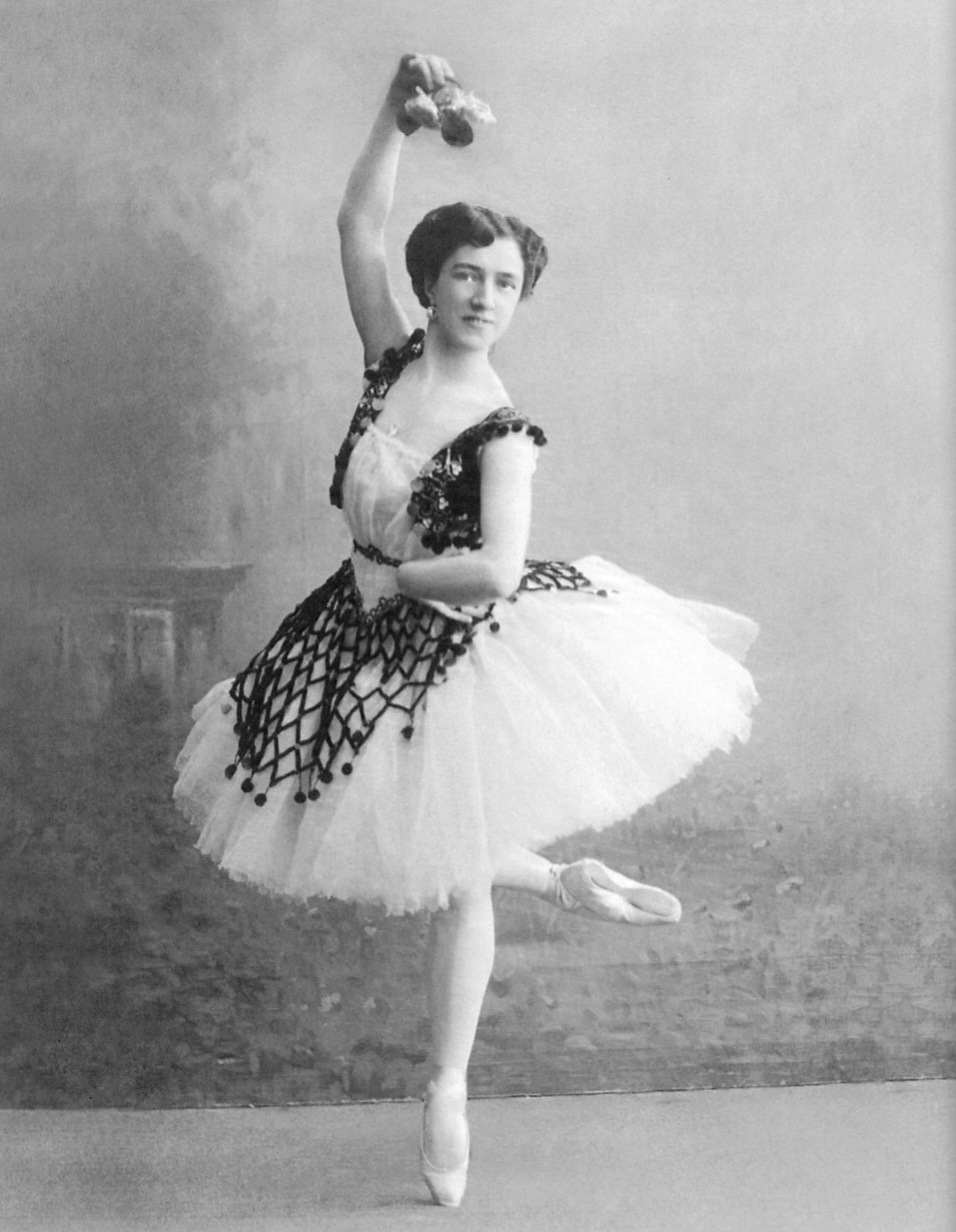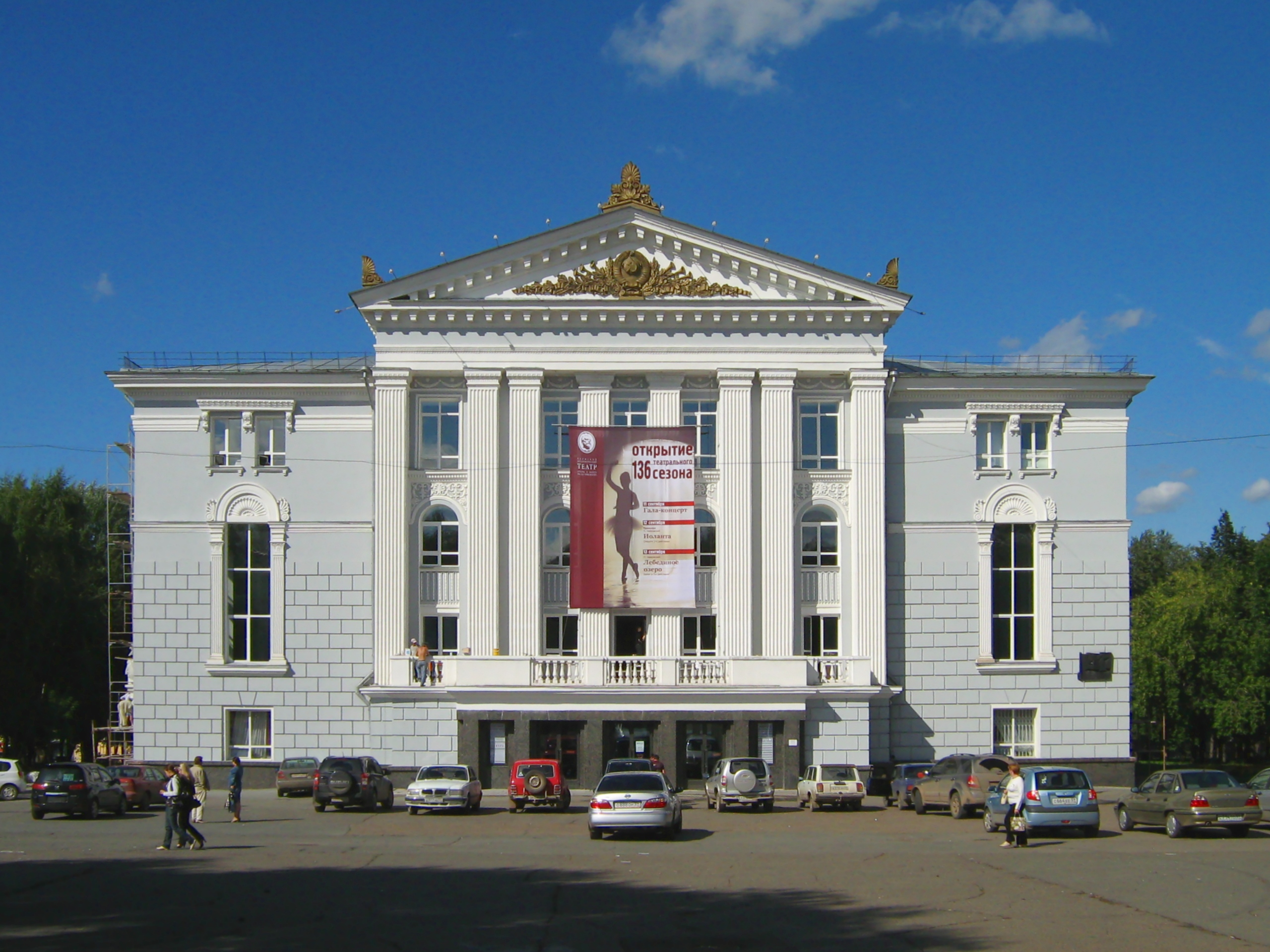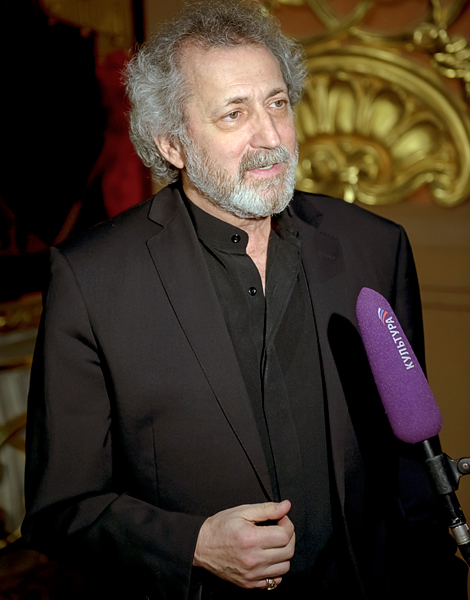|
Russian Ballet
Russian ballet (russian: Русский балет) (french: Ballet russe) is a form of ballet characteristic of or originating from Russia. Imperial Russian Ballet Until 1689, ballet in Russia was nonexistent (ballet has its origins in the courts of the Italian Renaissance in the 15th and 16th centuries.) The Tsarist control and isolationism in Russia allowed for little influence from the West. It wasn't until the rise of Peter the Great that Russian society opened up to the West. St. Petersburg was erected to embrace the West and compete against Moscow's isolationism. Peter the Great created a new Russia which rivaled the society of the West with magnificent courts and palaces. His vision was to challenge the west. Classical ballet entered the realm of Russia not as entertainment, but as a “standard of physical comportment to be emulated and internalized - an idealized way of behaving.”Homans (2010), 244. The aim was not to entertain the masses of Russians, but to cultivate ... [...More Info...] [...Related Items...] OR: [Wikipedia] [Google] [Baidu] |
George Balanchine
George Balanchine (; Various sources: * * * * born Georgiy Melitonovich Balanchivadze; ka, გიორგი მელიტონის ძე ბალანჩივაძე; January 22, 1904 (O. S. January 9) – April 30, 1983) was an ethnic Georgian American ballet choreographer who was one of the most influential 20th-century choreographers. Styled as the father of American ballet, he co-founded the New York City Ballet and remained its artistic director for more than 35 years.Joseph Horowitz (2008)''Artists in Exile: How Refugees from 20th-century War and Revolution Transformed the American Performing Arts.''HarperCollins. His choreography is characterized by plotless ballets with minimal costume and décor, performed to classical and neoclassical music. Born in St. Petersburg, Balanchine took the standards and technique from his time at the Imperial Ballet School and fused it with other schools of movement that he had adopted during his tenure on Broadway and ... [...More Info...] [...Related Items...] OR: [Wikipedia] [Google] [Baidu] |
Agrippina Vaganova
Agrippina Yakovlevna Vaganova (russian: Агриппина Яковлевна Ваганова; 26 June 1879 – 5 November 1951) was a Soviet and Russian ballet teacher who developed the Vaganova method – the technique which derived from the teaching methods of the old Imperial Ballet School (today the Vaganova Academy of Russian Ballet) under the ''Premier Maître de Ballet'' Marius Petipa throughout the mid to late 19th century, though mostly throughout the 1880s and 1890s. It was Vaganova who perfected and cultivated this form of teaching the art of classical ballet into a workable syllabus. Her ''Fundamentals of the Classical Dance'' (1934) remains a standard textbook for the instruction of ballet technique. Her technique is one of the most popular techniques today. Biography Vaganova was born in Saint Petersburg to Akop Vaganov, an Armenian from Astrakhan, who worked as an usher at the Mariinsky Theatre, and a Russian mother. Vaganova's whole life was connected with the ... [...More Info...] [...Related Items...] OR: [Wikipedia] [Google] [Baidu] |
Vaganova Method
The Vaganova method is a ballet technique and training system devised by the Russian dancer and pedagogue Agrippina Vaganova (1879–1951). It was derived from the teachings of the ''Premier Maître de Ballet'' Marius Petipa, throughout the late 19th century. It was Agrippa Vaganova who perfected and cultivated this form of teaching classical ballet and turned it into a viable syllabus. The method fuses elements of traditional French style from the romantic era with the athleticism and virtuosity of Italian Cecchetti technique. The training system is designed to involve the whole body in every movement, with equal attention paid to the upper body, legs and feet. Vaganova believed that this approach increases consciousness of the body, thus creating a harmony of movement and greater expressive range. History Upon graduating from the Imperial Ballet School in Saint Petersburg in 1897, Agrippina Vaganova began dancing with the school's associated professional company, the Impe ... [...More Info...] [...Related Items...] OR: [Wikipedia] [Google] [Baidu] |
Moscow Ballet
The name Moscow Ballet has commonly been applied to a number of different ballet companies, which include: * Moscow Ballet (United States), a Russian ballet company. The Moscow Ballet tours annually in the United States with its Great Russian '' Nutcracker'' production. *The Bolshoi Ballet, based in Moscow, Russia Russia (, , ), or the Russian Federation, is a transcontinental country spanning Eastern Europe and Northern Asia. It is the largest country in the world, with its internationally recognised territory covering , and encompassing one-ei ... has often been referred to generically as "The Moscow Ballet". *A "Moscow Ballet", founded in 1979, gained publicity in 1987 when a dancer, Andrei Ustinov, defected during the company’s first U.S. tour. Its artistic director is Vyacheslav Gordeyev, previously of the Bolshoi Ballet. Its 1987 tour was seen by an estimated 150,000 people.Stein, Michelle: "Ustinov Finally Hits Portland", "The Oregonian", April 1, 1988 Referenc ... [...More Info...] [...Related Items...] OR: [Wikipedia] [Google] [Baidu] |
Russian State Ballet Of Siberia
The Russian State Ballet of Siberia, is a classical ballet company based at the Krasnoyarsk State Opera and Ballet Theatre, in Krasnoyarsk, Russia. Founded in 1978 by graduates of the choreographic schools of Moscow, St. Petersburg, Kiev, Novosibirsk and Yekaterinburg. Repertoire The Russian State Ballet of Siberia toured the UK in 2007, 2008, 2009, 2012, 2013, 2016, 2017 and 2020. Their repertoire included ''Coppélia'', ''The Nutcracker'', ''Swan Lake'', '' The Sleeping Beauty'', ''Romeo and Juliet'', ''Cinderella'' and ''Giselle ''Giselle'' (; ), originally titled ''Giselle, ou les Wilis'' (, ''Giselle, or The Wilis''), is a romantic ballet (" ballet-pantomime") in two acts with music by Adolphe Adam. Considered a masterwork in the classical ballet performance canon ...''. References Ballet companies in Russia Performing groups established in 1978 {{ballet-stub ... [...More Info...] [...Related Items...] OR: [Wikipedia] [Google] [Baidu] |
Novosibirsk Opera And Ballet Theatre
The Novosibirsk Opera and Ballet Theatre (the official title is the Novosibirsk State Academic Opera and Ballet Theatre (russian: Новосибирский государственный академический театр оперы и балета)) is a theatre in Novosibirsk and Siberia. It is located at the center of Novosibirsk at Lenin square. The building was completed in February 1944, and the first performance was held on 12 May 1945. , it was the largest theatre in Russia, larger than the Bolshoi Theatre (literally "''Big theatre''") in Moscow. Music directors Current music director is Dmitri Jurowski. Previous directors were Teodor Currentzis (2004 to 2010) and Ainars Rubikis. The building The principal construction of the theatre building is the big dome, which is wide and high. The theater also served as the fifth Pit Stop In motorsports, a pit stop is a pause for refuelling, new tyres, repairs, mechanical adjustments, a driver change, as a penalt ... [...More Info...] [...Related Items...] OR: [Wikipedia] [Google] [Baidu] |
Perm Opera And Ballet Theatre
The Perm Tchaikovsky Opera and Ballet Theatre is an opera and ballet theatre in the city of Perm in Russia. It is one of the oldest theatres in the country, and it has remained a major musical centre during its history, in which many significant art events have taken place. Its ballet troupe is one of the most popular in Russia. The theatre is often named "Tchaikovsky's House", and all stage works of Pyotr Ilyich Tchaikovsky, who was born in the region, are presented in its repertoire: 10 operas and 3 ballets. Festivals of Tchaikovsky's works were notable cultural events of the country. History The theatre was inaugurated on 24 November 1870 with the premiere performance being Mikhail Glinka's ''A Life for the Tsar''. The building was constructed from 1874 to 1879, after which the first performance took place in the winter of 1879/1880. A new epoch in the history of the theatre started in 1896. It received the patronage of the city parliament, which decided to finance the thea ... [...More Info...] [...Related Items...] OR: [Wikipedia] [Google] [Baidu] |
Mikhailovsky Theatre
The Mikhailovsky Theatre (russian: Миха́йловский теа́тр) is one of Russia's oldest opera and ballet houses. It was founded in 1833 and is situated in a historical building on 1, Arts Square in Saint Petersburg. It is named after Grand Duke Michael Pavlovich of Russia. Since 1989, it has borne the Modest Mussorgsky name. Since 1991 it has officially been named The St Petersburg Mussorgsky State Academic Opera and Ballet Theatre—Mikhailovsky Theatre. History Before 1871 The theatre was established in 1833 by decree of Tsar Nicholas I. Before the 1917 Revolution, the Mikhailovsky did not have its own resident company. Performances were given either by a French company, hired by the Russian Imperial Theatres, or at the end of the century by the Mariinsky Theatre and Alexandrinsky Theatre companies. When the Bolsheviks took power the French company was forced to leave Russia, and in 1917 the Mikhailovsky Theatre was closed. Communist era On 6 March 1 ... [...More Info...] [...Related Items...] OR: [Wikipedia] [Google] [Baidu] |
Boris Eifman
Boris Eifman (Борис Яковлевич Эйфман) (born 22 July 1946, in Rubtsovsk) is a Russian choreographer and artistic director. He has done more than fifty ballet productions. Eifman was born in Siberia, where his engineer father had been assigned to work in a tank factory. In 1953, the family moved to Kishinev, Moldavia. Eifman graduated from the Kishinev Ballet School in 1964. He performed as a dancer with the Kishinev Opera and Ballet Theatre; and went on to study choreography at the Leningrad Conservatory, where his teacher was choreographer Georgi Aleksidze. Eifman graduated from the Leningrad Conservatory in 1972. He then became a ballet master at the Vaganova Academy of Russian Ballet, from 1972-1977. In 1977, he received permission to found his own company, originally known as Leningrad Theatre of Contemporary Ballet. The troupe was known by various names, but today its official title is St. Petersburg State Ballet Theatre of Boris Eifman, or simply Eifman ... [...More Info...] [...Related Items...] OR: [Wikipedia] [Google] [Baidu] |
Vaganova Academy Of Russian Ballet
The Vaganova Academy of Russian Ballet is a school of classical ballet in St Petersburg, Russia. Established in 1738 during the reign of Empress Anna, the academy was known as the Imperial Ballet School until the Soviet era, when, after a brief hiatus, the school was re-established as the Leningrad State Choreographic Institute. In 1957, the school was renamed in honor of the pedagogue Agrippina Vaganova, who cultivated the method of classical ballet training that has been taught there since the late 1920s. Many of the world's leading ballet schools have adopted elements of the Vaganova method into their own training. The Vaganova Academy is the associate school of the Mariinsky Ballet, one of the world's leading ballet companies. Students of the school have found employment with ballet and contemporary companies worldwide, such as the Bolshoi Ballet, The Royal Ballet, American Ballet Theatre and the Mikhailovsky Ballet. History The school was established as the Imperial Theat ... [...More Info...] [...Related Items...] OR: [Wikipedia] [Google] [Baidu] |
Moscow State Academy Of Choreography
The Moscow State Academy of Choreography (russian: Московская государственная академия хореографии), commonly known as The Bolshoi Ballet Academy, is one of the oldest and most prestigious schools of ballet in the world, located in Moscow, Russia. It is the affiliate school of the Bolshoi Ballet. The Bolshoi Ballet receives the majority of its dancers from the academy, as do most other Moscow ballet companies. Numerous choreographers, instructors and graduates of the academy have become renowned, including Olga Lepeshinskaya, Raisa Struchkova, Natalia Bessmertnova, Ekaterina Maximova, Maya Plisetskaya, Nikolai Fadeyechev, Vladimir Vasiliev, Mikhail Lavrovsky, Nikolay Tsiskaridze, to be bestowed a People's Artist of the USSR, "prima ballerina assoluta" and "premier dancer", the ultimate title for a ballet performer of the Soviet Union. The academy was awarded the Japanese Foreign Minister’s Commendation for their contributions to pr ... [...More Info...] [...Related Items...] OR: [Wikipedia] [Google] [Baidu] |

.jpg)




